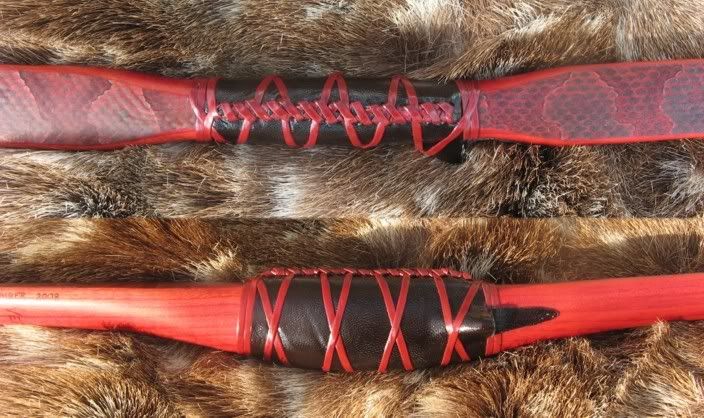I like to start out by getting the handle shaped nicely before the bow reaches final tiller. Final shaping the grip first removes the possibility that it could cause a tweak in the tiller later. Final shaping includes making a nice rounded back without any sharp corners. Instead of cutting (rounding) deeply into the meat of the back ring, I like to glue a couple layers of split leather onto the back, which can be rounded without compromising the integrity of the bow. Barge cement works nicely for gluing.
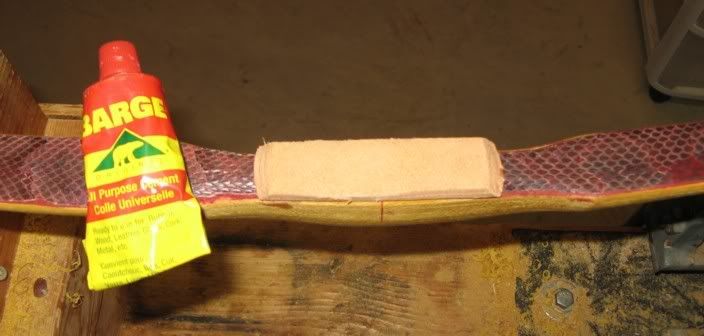
Next, I rough trim and shape the leather with a hobby knife and then rasp.
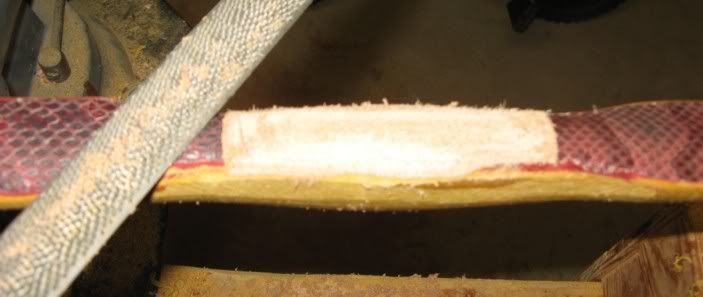
But the leather will shred somewhat. To get a clean shape that blends with the wood, I soak the leather in runny superglue, applied with a latex gloved finger.
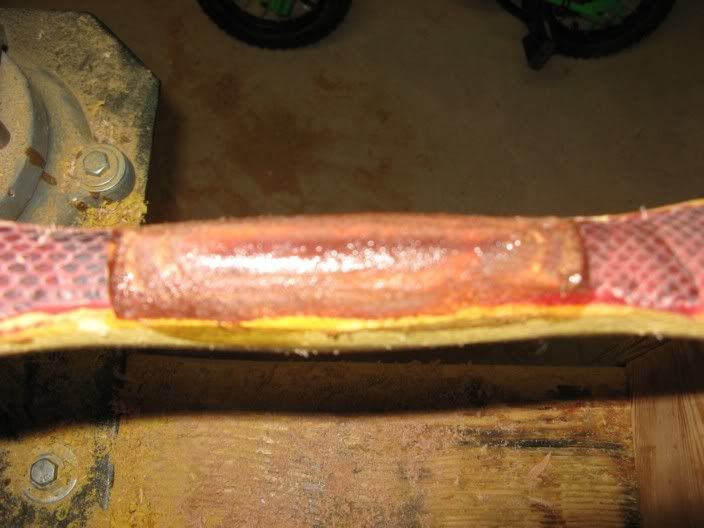
When the glue dries, it hardens the leather and allows it to be worked much like wood. Rasping, filing, and sanding can be finished then, often with another coating of superglue somewhere in between to coat soft leather that becomes exposed.
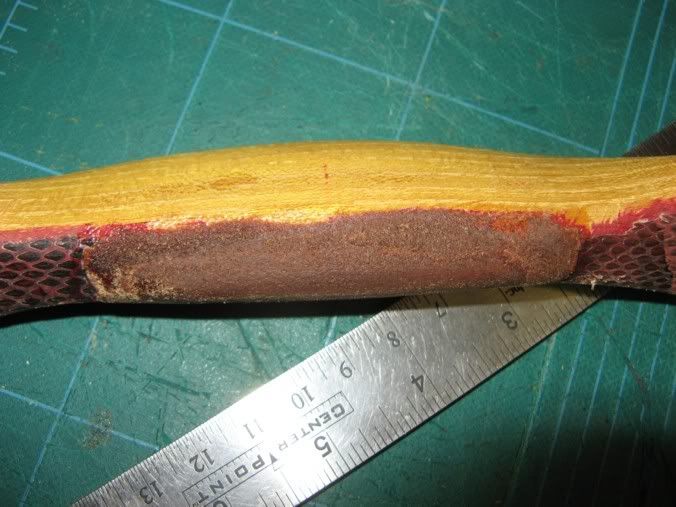
After the bow has been tillered, shot in, and finished, I apply a small leather shelf made from 3 pieces of glued up latigo. Barge cement, again, works nicely.
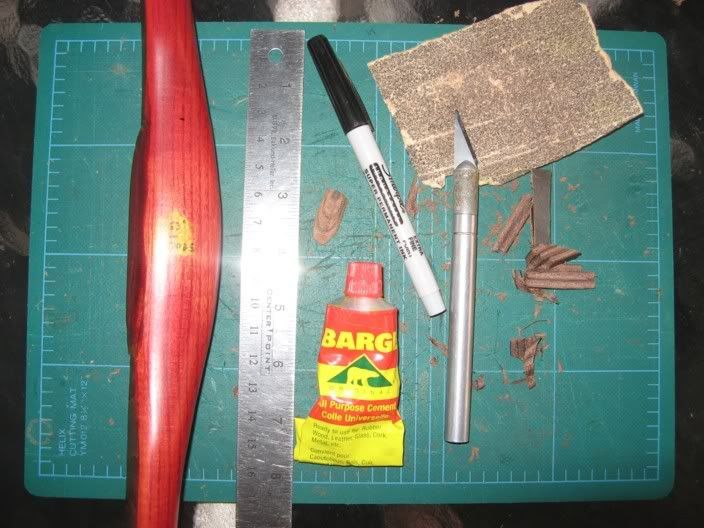
And finally, it's on to adding the actual leather grip. I prefer fairly thin, supple leather. Deerskin or kidskin (goatskin) is my preference. Use a staightedge to cut a perfectly square block of leather initially. Leave an extra 1/2-inch on the top and bottom ends if you plan to fold them over for a really "finished" look. Stretch the leather around the grip to test the fit. Trim the corners slightly to fit the grip geometry. For a neat appearance, it should require a somewhat snug pull to get the edges to meet along the back of the bow.
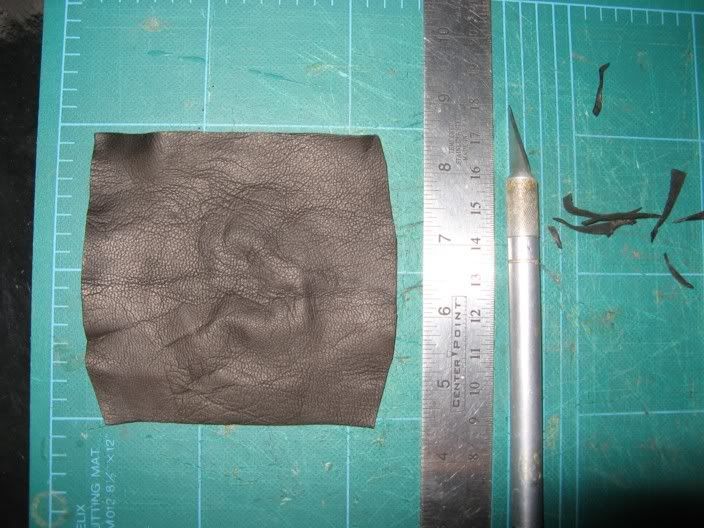
A multi-pronged punch is ideal for making neatly aligned holes for the lacing. I have a few different sizes for the type/thickness of lacing that I plan to use. An awl, sharp nail, or drill bit will work, too.
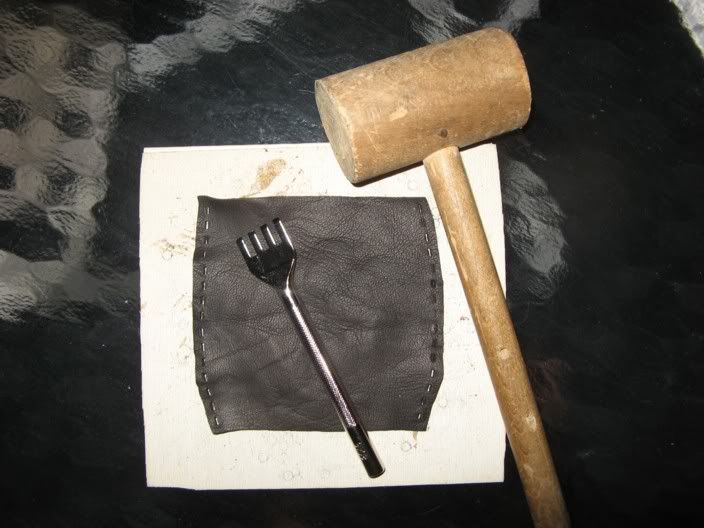
To attach the grip, I coat the sides and belly of the wood with Barge. I apply it somewhat thicker around the leather shelf and also apply it correspondingly on the leather to assure there is good adhesion around the shelf. Barge grabs the grip on contact and leaves little room for placement error, so be sure to get it right the first time. The best way that I've found to do this is to set the leather grip on the workbench and slowly lower the belly of the bow into place. Stretch the leather around to the back of the bow, making sure to press and hold the leather grip in firmly against the leather shelf for the Barge to bite. If you want a little wiggle room, just use the Barge around the leather shelf and use much slower setting Titebond along the rest of the sides and belly. Using two needles, you can then make a neat baseball or X-stitch down the back. I used leather lacing on this grip. If you want to seal your grip, you can coat it in Leather Lac. Or if you used a paraffin finish, that works great over porous type leathers, too.
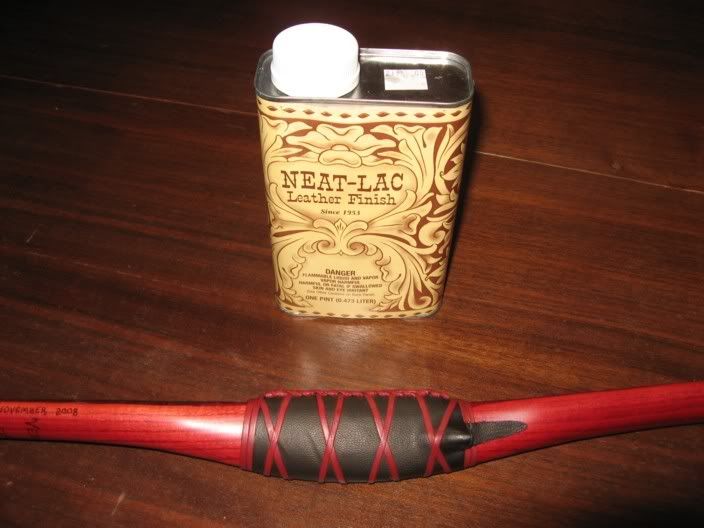
When you're done, enjoy and shoot!
